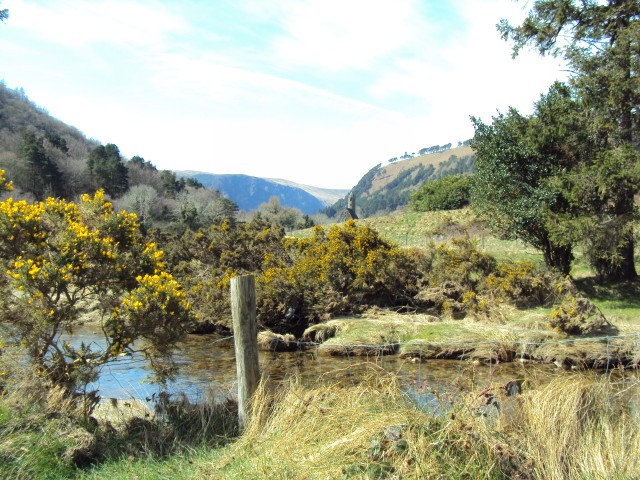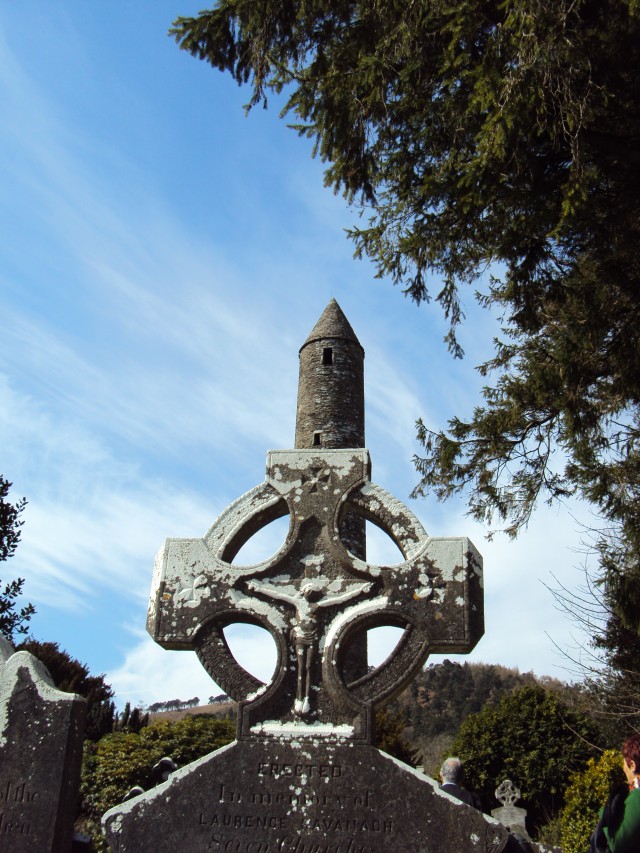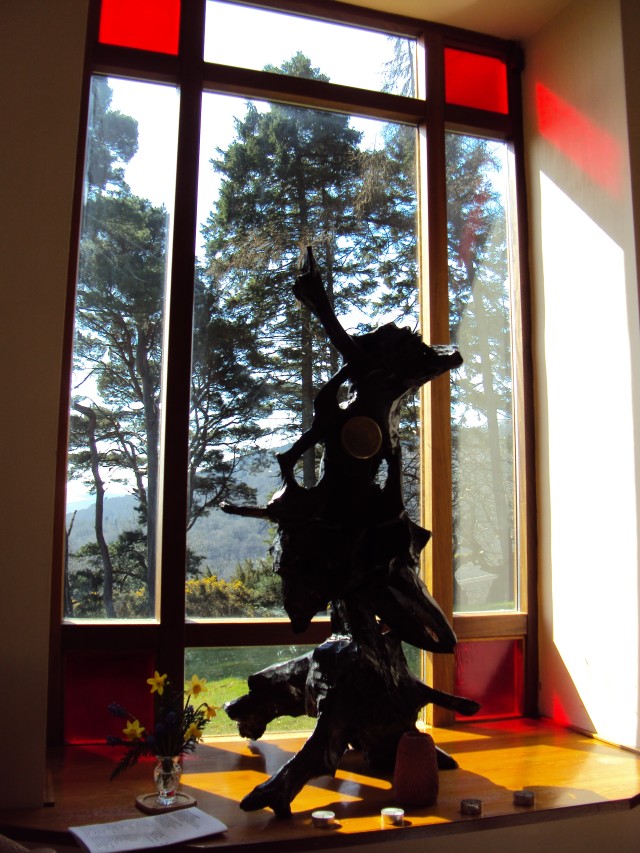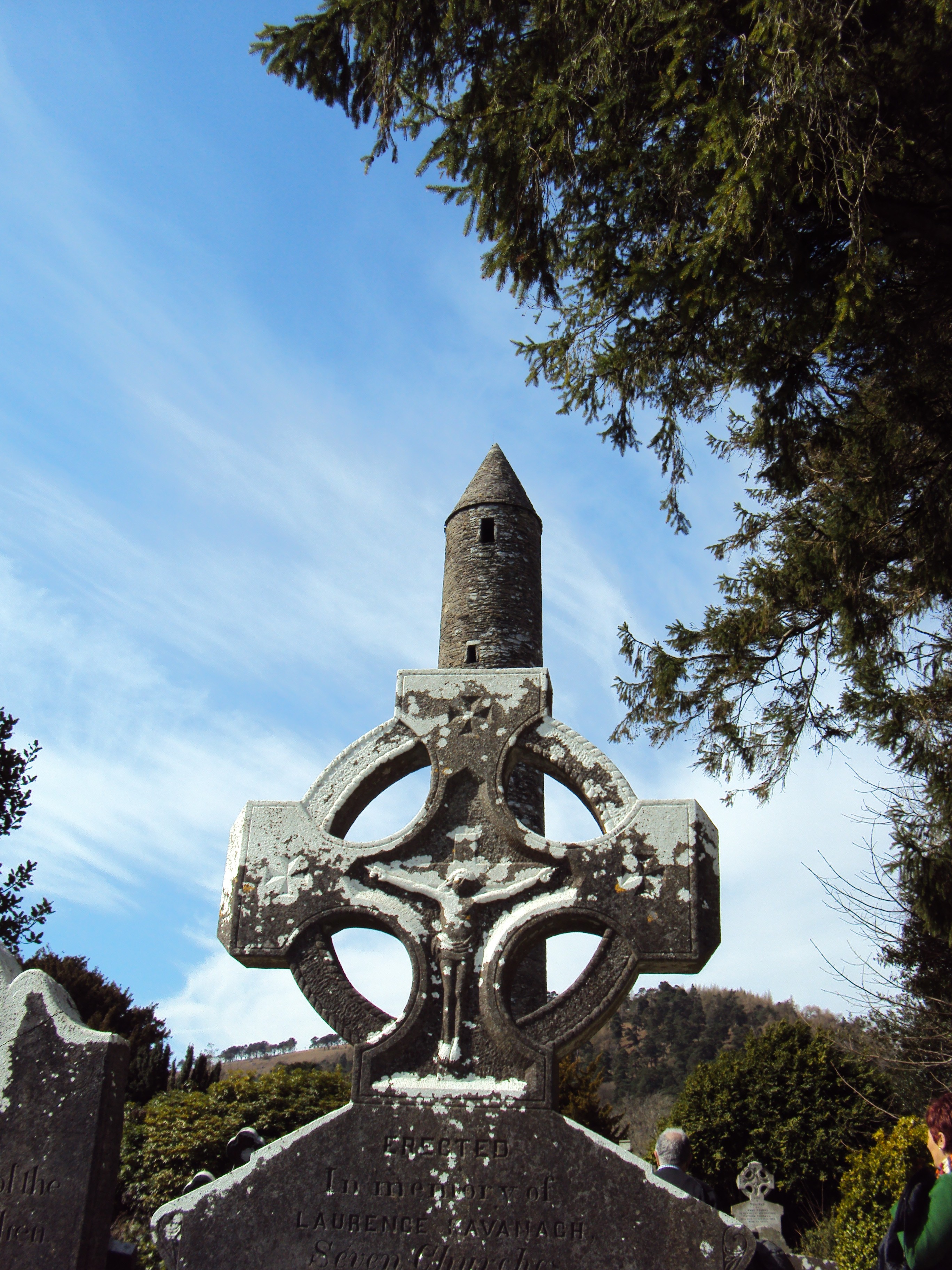BAMBERG, Germany--Considered the Garden of Ireland by many Irish, Wicklow County is home to some of the premiere natural sights of the country, including mountains, hills, valleys, rivers and lakes. One of the county's oases is the town of Glendalough, which in Gaelic means "valley of the two lakes."
With its lakes nestled in a secluded valley, reflecting cascading streams and deep green fauna climbing the hills on either side, walkers, hikers and pilgrims journey from all over the world to experience the meditative quiet and natural beauty of this idyllic nature reserve and the surrounding town. Natural beauty is not the only draw for tourists though, as the site has historical and religious significance as well.
The valley for which Glendalough is named is home to the ancient site of St. Kevin's Monastery. Historians believe that as a young man in the sixth century, Kevin left the Dublin monastery he inhabited for the solitude of the surrounding countryside.
The monk took up residence in a stone beehive hut overlooking one of the two lakes in the Glendalough valley and lived a hermetic life there for some time. Kevin's reputation as a holy man preceded him to Glendalough.
Eventually, his followers convinced him to leave his solitary life and found a religious community in the valley below his hut. St. Kevin's Monastery, as the site it is now known, became a bustling religious school attended by scholars from all over Europe. Admission is free and a visitor's center near the entrance allows guests to become oriented with the area.
Several members of U.S. Army Garrison Bamberg's Catholic community embarked on a four-day retreat to Glendalough this spring under the guidance of Chaplain (Capt.) Stephen McDermott, a priest at the Bamberg Community Chapel. Group members were lodged in the Hermitage Centre cottages and the Pinewood Lodge Bed and Breakfast just across the road.
One of the group members, Ann Ragucci, was very taken with the area and overall experience afforded by the people and natural beauty of Glendalough. Since moving to Bamberg in March 2007, Ragucci has traveled to Italy, Greece, Croatia and all over Germany. A mother of three, she said she attended the retreat to get away from the busyness and stresses of life for a brief time.
"I would say the solitude that I expected to find was a main reason I went," Ragucci said. "I knew there was a hermitage, which is one of the reasons I went. I knew it would be very quiet and reclusive. A lot of the (local) attitudes were very inviting."
The Hermitage Centre, less than two miles from the valley, has been frequented by a variety of guests since its inception as a millennium project in Ireland 10 years ago. Sister Geraldine Collins of the Sisters of Mercy order is the current director of the center.
Collins has lived at the site for the past two years, maintaining a welcoming place for those traveling to one of Ireland's top pilgrimage sites. Her background in human communication, psychotherapy and spirituality has allowed her to act as guide to those with spiritual, meditative and historical interests.
"We see ourselves mainly as holding a space of quiet and stillness for so many who are tired and worn out from the stresses of life," Collins said. "We offer a listening presence if this is requested...People come to the Hermitage Centre for many different reasons. Some come just to relax, rest and enjoy the beauty of nature. We welcome people who are 'searching' in some way, no matter how diverse their religion or culture. While we are Roman Catholic sisters, we offer a space to all who need a place such as ours. We try to distinguish our service from tourism, as ours has a spiritual dimension. We often find that people who come to take 'time out' discover that in the quiet and stillness some part of their story or life's journey surfaces. The beauty of Glendalough itself can be therapeutic and healing."
Collins led the Bamberg group through a meditative walk of the valley, pointing out the historical significance of the ruins and incorporating reflective moments.
Ragucci found the graves and Round Tower to be her favorite of the remaining monuments. The most prominent part of the ancient locale, the Round Tower looms over the other ruins at more than 30 meters high. The tower was built about 1,000 years ago by monks to serve as a bell tower and landmark for visitors. It may have also been used for refuge when English forces attacked the settlement in the 14th century.
"That part was definitely a sight to see if you're a history buff," Ragucci said. "To walk where there is so much history and that went through repeated [destruction]...was really amazing."
Ragucci emphasized her desire to return to Glendalough with her husband and children.
"The other thing that really impressed me was the nature and the nature trails they had put in," she said. "It was so easy and so laid back. You could see a family with a soccer ball and sandwiches just spending the day."
Ragucci was also impressed with the local fare, which had many restaurants that offered organic and locally grown items. People of varied backgrounds, from business professionals, to mothers to students visit the Hermitage Centre, Collins said.
"We try to accommodate and welcome all who come," Collins said. "What we offer is a safe place of simple and natural beauty where people can be themselves and discover an inner peace. The biggest impression on guests is the peace, the calm, the stillness and the beauty of nature. They also appreciate the warm welcome they receive and the lack of intrusion. Once we show people to their hermitage which is self-contained, we do not interfere unless they wish to come to us to pray or request some time to talk."
The Irish poet, singer, songwriter and performer, Thomas Moore lived in Dublin and used the county's many beauties for inspiration. One of the sights visited by the Bamberg group was the Meeting of the Two Waters, where the rivers of Avonmore and Avonbeg converge. A simple stone monument under a nearby tree reads that Moore wrote some of his poetry on the very site.
"My favorite part was the time alone," Ragucci said. "We got to experience the godliness of that place and just to reflect on where we were in our lives. The support that we had through Father Stephen's group and focusing on our religious life was really good."
Though Glendalough is somewhat secluded from city life, it is still easily accessible from Dublin. Buses, rental cars and some guest house shuttles are all available to transport visitors from Dublin Airport.
"There were at least two or three car rental places along the way," Ragucci said. "It was very accessible. Driving on the other side of the road is different, so you should take that into consideration."
The greater Glendalough area offers even more extreme visions of Ireland's natural beauty- soaring peaks accessible by car, rivers, lakes and rocky outcroppings awarding magnificent views of the valleys below.
Anyone who cannot make the journey, which is just outside of Dublin, can view many of these sights in television and the big screen. The widely popular British Broadcasting Corporation 1990's television series "Bally kiss angel" was filmed in the town of Avoca, and the Wicklow mountains have provided a backdrop for several movies including "Braveheart," "King Arthur" and "Lassie" (2005).
Any traveler who has experienced this beautiful and untouched part of the country will tell you that no picture or video will do it justice.
"The people, the food...it's a very warmhearted, kind place and open to anyone," Ragucci said.
For more information on Glendalough visit http://www.glendalough.connect.ie/. For more information on the Hermitage Centre visit http://www.hermitage.dublindiocese.ie/.






Social Sharing